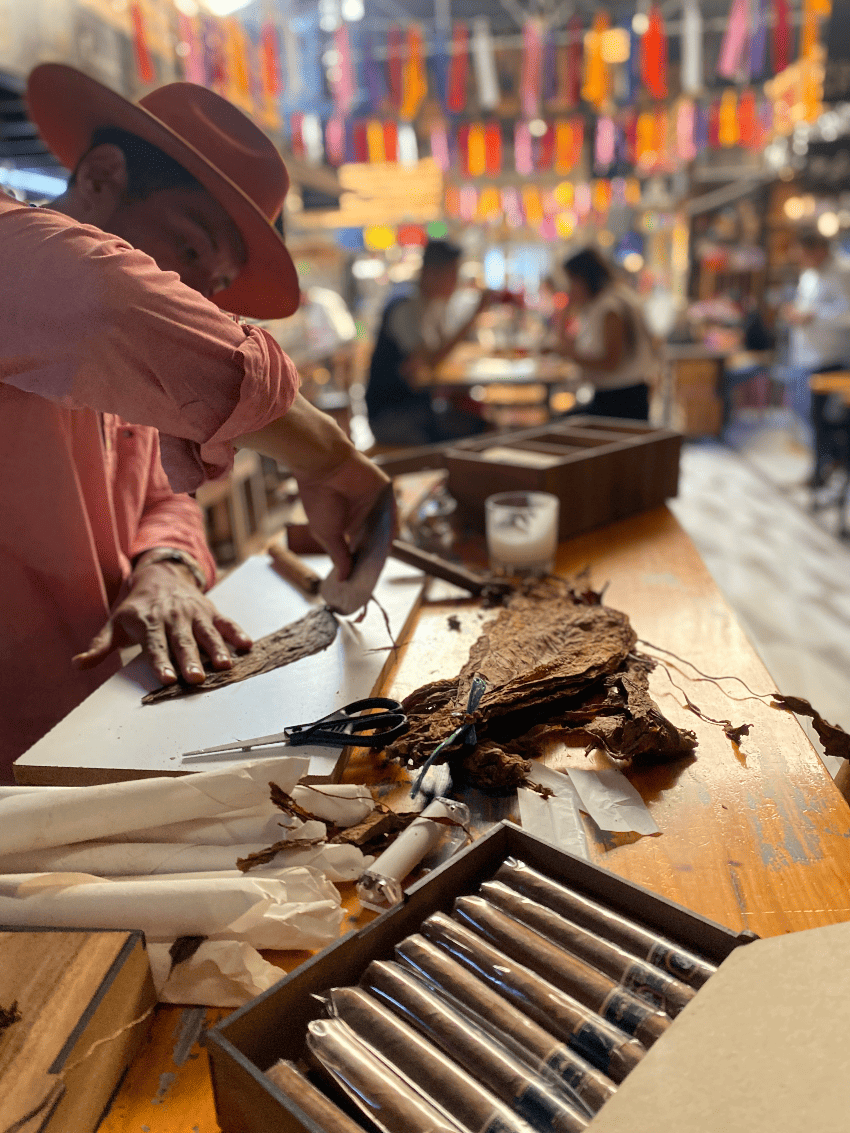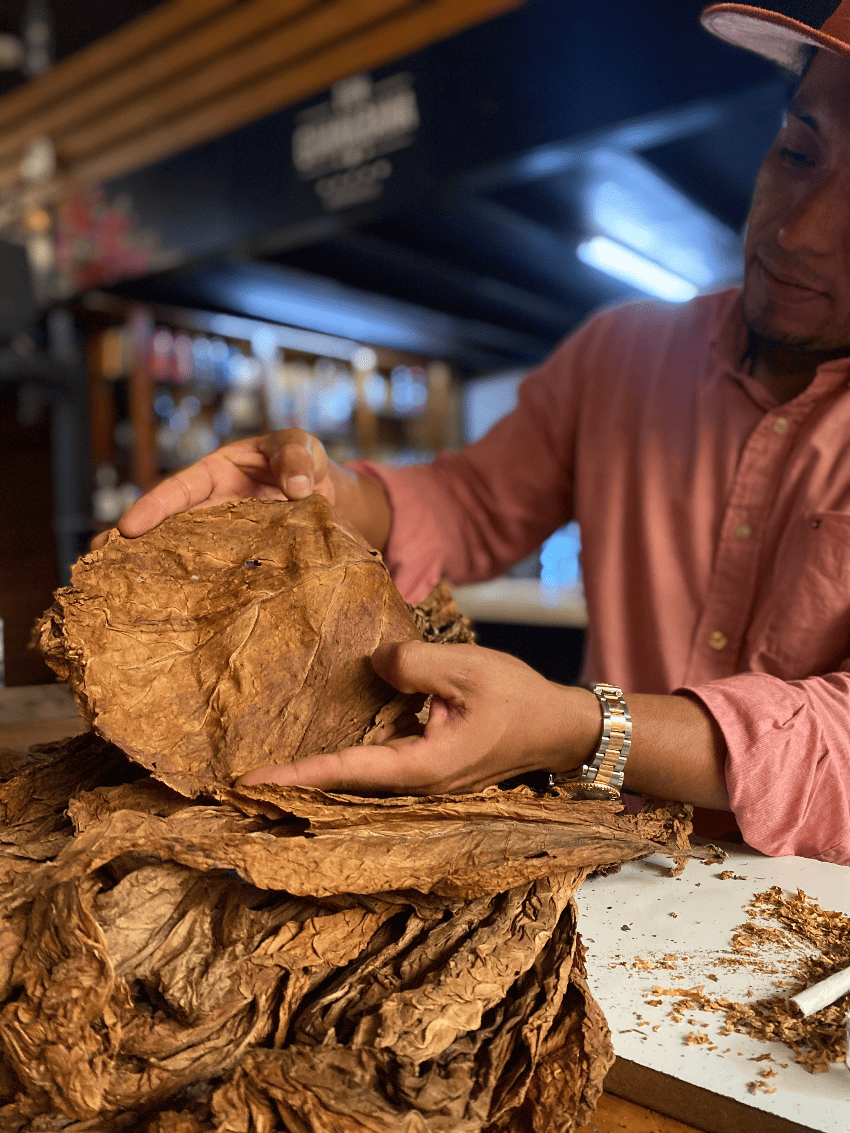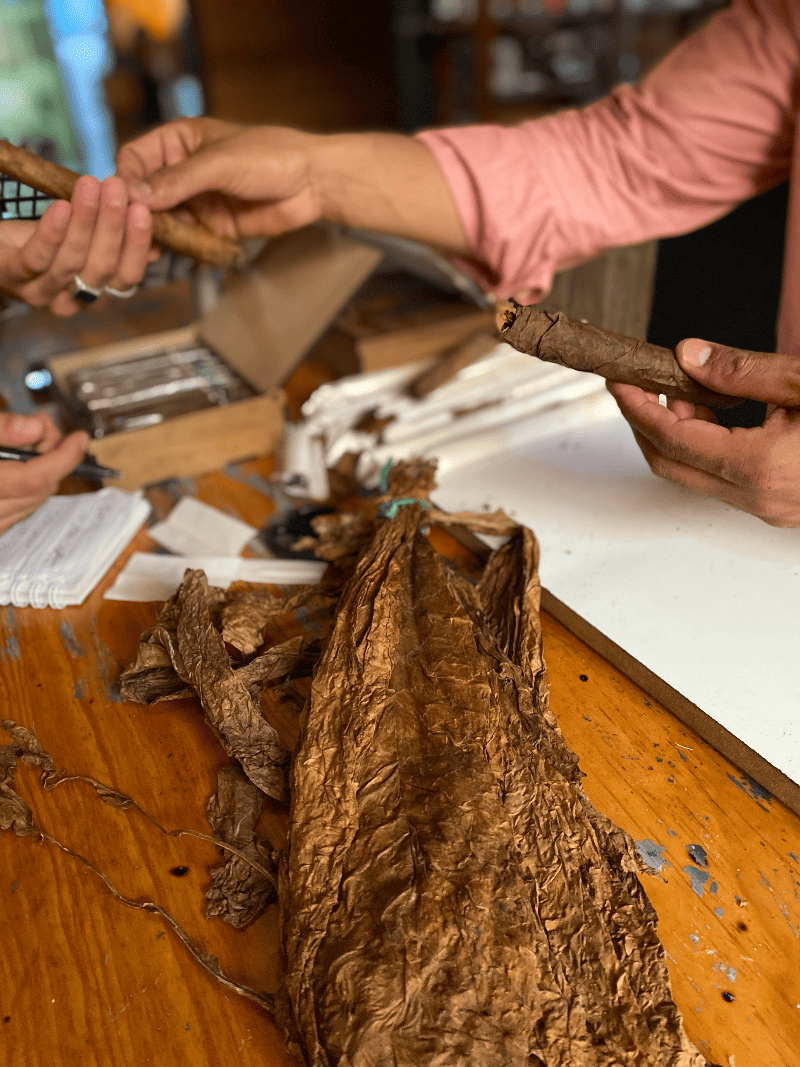Breathing new life into ancient tobacco traditions

“My grandmother showed me the leaves when I was a child. These leaves changed my life and when she died, I knew they would become my life’s work.”
This is Alberto Castrejón, telling me about his journey to becoming a cigar maker in southern Mexico.
Castrejón strides confidently into the airy auditorium where we meet in Oaxaca city. He adjusts his signature orange suede hat, carrying two wooden briefcases containing every ingredient needed to produce his artisanal Mexican cigars.
He begins leading us through a carefully executed cigar-making workshop, pausing briefly to ensure all attention is focused on his next words: “Every part of the production is completed by hand. We plant and pick the leaves, dry them manually, and when the green leaves have turned the perfect brown color, they are ready to be bunched and rolled.”
His gaze falls back under the rim of his hat as his attention returns to a wooden rolling board on the table between us. He brandishes a curved blade, which he uses to surgically cut the “camisa” or wrapper of the cigar.
Between 2-5 complete tobacco leaves are used as the “tripa” or filler of each cigar, which once rolled together by hand, are left to form within a wooden mold. Next comes the “capote” or binding leaves, which wrap around the interior filler leaves, which represent the second vital component of the hand-made cigar process.

“My family prefers to use the same plant for each part of the cigar. It is our natural process, which means nearly all parts of the plant are used.”
Castrejón’s words and passion for tobacco reveal pride in mastering the artisanal craft, as well as a love for the traditions of his country.
British neurologist and best-selling author Oliver Sacks writes in his book, “Oaxaca Journal”, that tobacco’s origins are closely entwined with Mexico. A 10th-century pot depicting a Maya man smoking a roll of tobacco leaves tied with string is the earliest evidence of tobacco smoking ever recorded.
A closer look at the etymology of the tightly-wrapped tobacco roll which Castrejón delicately unpacks in front of us, also reveals a deeper connection to its Mexican heritage. The Mayan term for smoking was “sik’ar”, which later became the Spanish word “cigarro” and later the English term cigar.

To create the light layer of glue that is to be used in the final and most intricate step of the process, Castrejón mixes hot water with ground-up maize within a clay vessel made in Guerrero. He continues, “Many of the most important elements of Mexican culture play a part in every step of my work.”
Silence falls upon our table as Castrejón carefully unfurls a large tobacco leaf – the camisa. Its veiny, bat-wing structure shows an intricate map of veins and tunnels etched into the dried, cracking surface of the precious leaf. In the exclusive world of handmade cigars, the wrapping leaf is the most revered part of the tobacco plant and the most expensive.
He made a single incision in the leaf several months ago to suspend it for drying, but a new scratch, cut or blemish would render the leaf useless to him at this crucial stage. The full-flavored leaf is wrapped around the precious tobacco roll, and he quickly moves to trim the edges and cap the ends.

While the origin of cigars is undeniably bonded to Mexican soil, the country’s reputation as a quality producer is at risk. The future of the craft in Mexico relies on young, ambitious artisans like Castrejón to breathe new life into the ancient tradition in order to keep pace with global leaders like Cuba and fast-risers including Ecuador, the Dominican Republic, and Nicaragua.
The first two installments of Framing Mexico were about mezcaleros and fishermen.
Mirja Vogel is a Oaxaca-based international photographer. Gordon Cole-Schmidt is a freelance journalist and editor.
Source: Mexico News Daily

